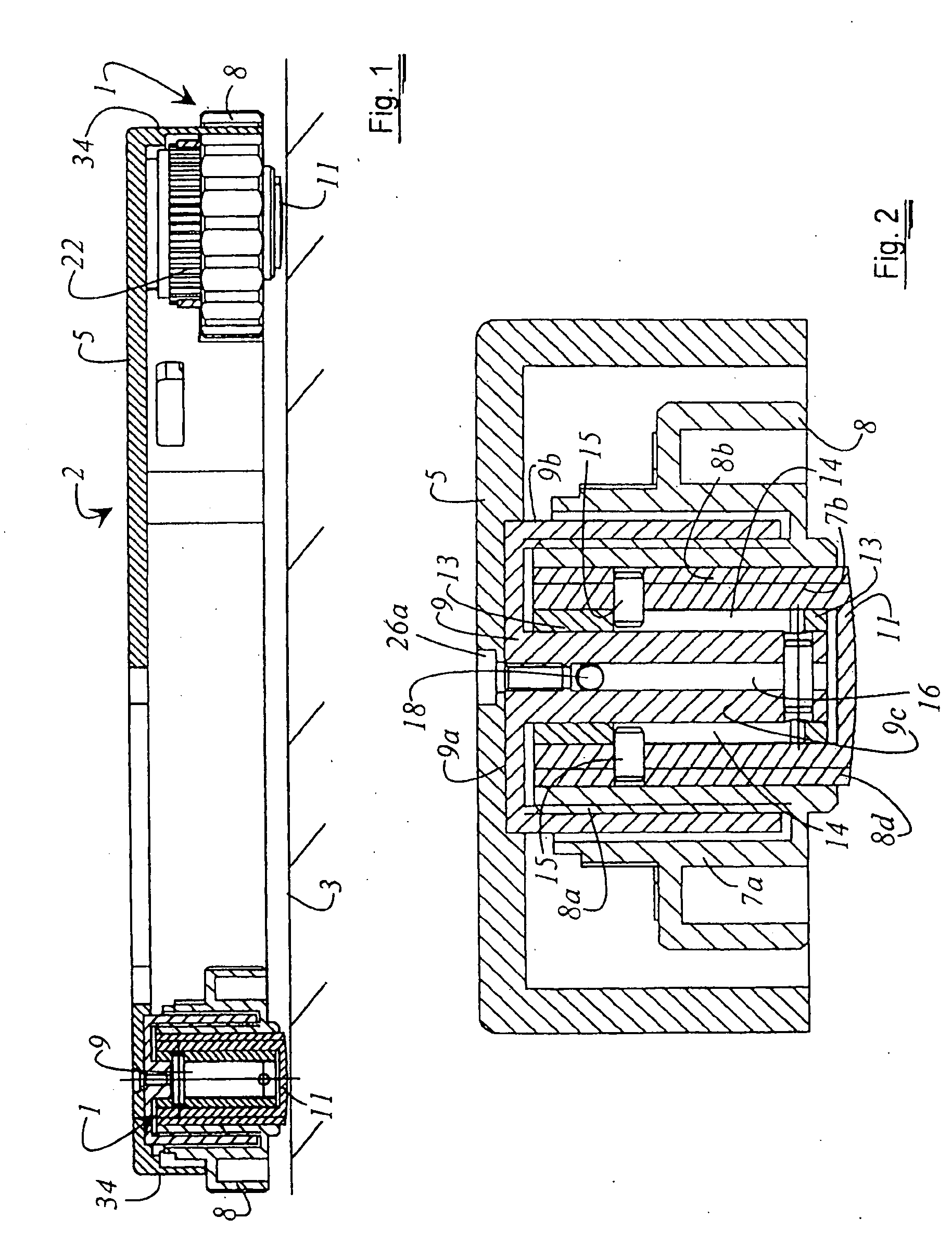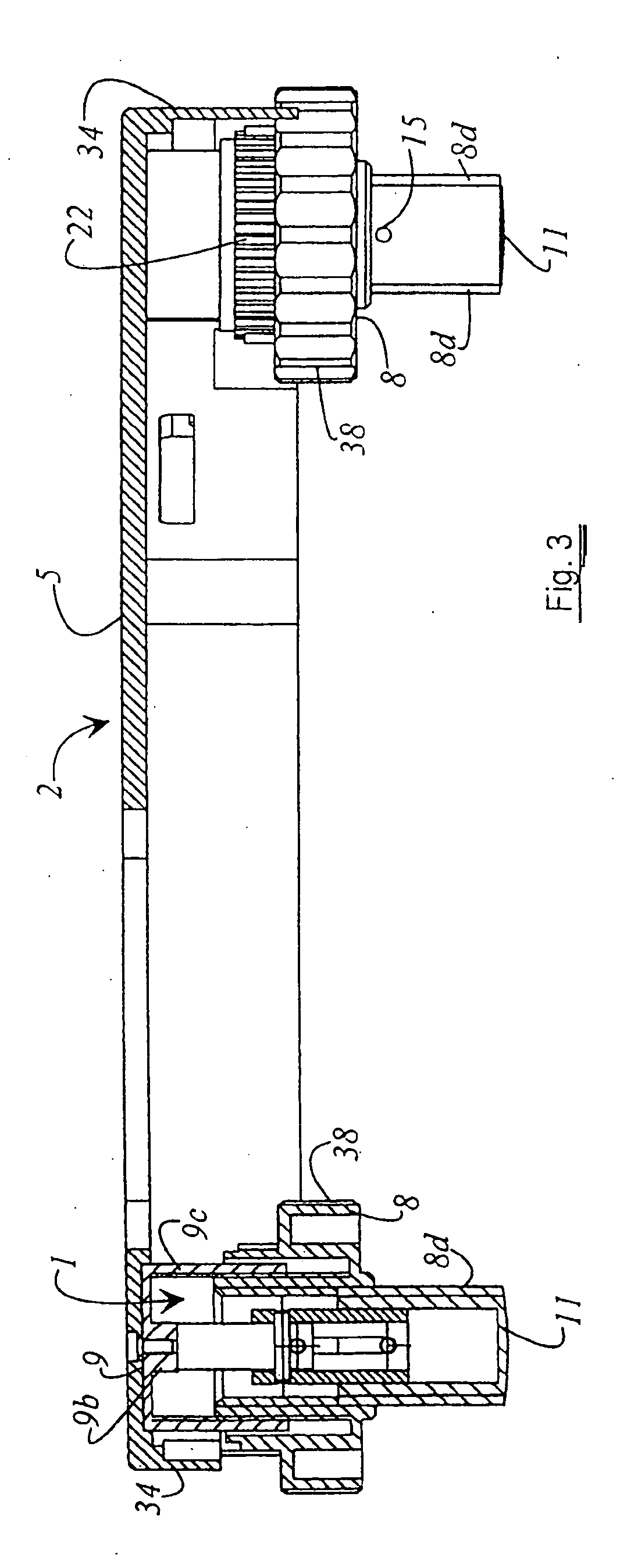Height-adjusting device and support for optical systems, which comprises height-adjusting devices
a technology of height adjustment and optical system, applied in the direction of machine supports, instruments, furniture parts, etc., can solve the problems of large floor surface, unfavorable hand position of users, and inability to provide height adjustment, etc., and achieve the effect of improving force transmission
- Summary
- Abstract
- Description
- Claims
- Application Information
AI Technical Summary
Benefits of technology
Problems solved by technology
Method used
Image
Examples
Embodiment Construction
[0037]FIG. 1 shows a cross section of an arrangement 2 wherein there are disposed several height-adjusting devices 1. Arrangement 2 defines a housing open toward a mounting surface 3, the housing comprising a bottom 5 and a surrounding wall 34. Each height-adjusting device 1 comprises a foot 11 which is in contact with mounting surface 3. Height-adjusting device 1 is provided with a rotary wheel 8 whereby the height adjustment is achieved. To increase the friction between the user's hand and rotary wheel 8, each rotary wheel 8 is provided with a ribbing 38. Naturally, other means, for example a rubber coating, may be used to increase friction. Moreover, in the embodiment shown in FIG. 1 each of the rotary elements 8 is provided with a toothed element 22 cooperating with a transmission element 24 (see FIG. 8).
[0038]FIG. 2 shows a cross section of a device 1 wherein the height adjustment has not been made. Height-adjusting device 1 comprises a socket 9 comprising a cover 9a, a cylind...
PUM
 Login to View More
Login to View More Abstract
Description
Claims
Application Information
 Login to View More
Login to View More - R&D
- Intellectual Property
- Life Sciences
- Materials
- Tech Scout
- Unparalleled Data Quality
- Higher Quality Content
- 60% Fewer Hallucinations
Browse by: Latest US Patents, China's latest patents, Technical Efficacy Thesaurus, Application Domain, Technology Topic, Popular Technical Reports.
© 2025 PatSnap. All rights reserved.Legal|Privacy policy|Modern Slavery Act Transparency Statement|Sitemap|About US| Contact US: help@patsnap.com



